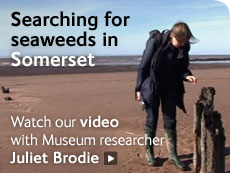- Home
- > Nature online
- > British natural history
- > Big Seaweed Search
- > Identify seaweeds
- > Seaweeds of the lower shore
Primary navigation
Seaweeds of the lower shore
Seaweeds can provide an important habitat for creatures like sea squirts, sea mat and flat periwinkles. Find out where to look for them on the lower shore.

Dabberlocks, Alaria esculenta
Location: Dabberlocks is found on the lower shore and in rock pools. It is a hardy seaweed that is common in very exposed and wave-battered areas.
Identification: The large, narrow, slightly wavy fronds have a distinct mid-rib and are often torn. It can sometimes grow huge, with fronds up to 5m long.
Facts: Dabberlocks is found in the north and west of Britain. It may be disappearing from its most southerly localities and we want to find out more in the survey.
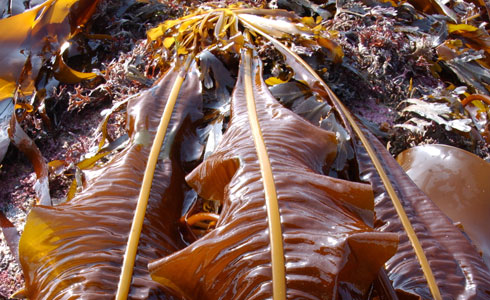
A close-up of dabberlocks, Alaria esculenta

Toothed wrack, Fucus serratus
Location: Toothed wrack is found on the lower part of the shore.
Identification: The fronds are flattened, with toothed edges and a mid-rib. This species looks similar to spiral wrack but has toothed, rather than smooth, edges. Its fronds can grow up to 1.5m long.
Facts: Toothed wrack is one of the commonest seaweeds on British shores. Its dense fronds provide a good habitat for many other creatures such as sea squirts, sea mat and flat periwinkles. We would like to find out just how abundant this species is.

A close up of toothed wrack, Fucus serratus
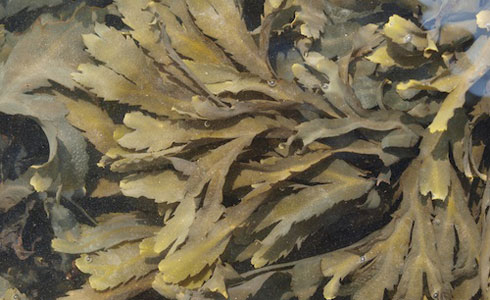
Toothed wrack, Fucus serratus, in water
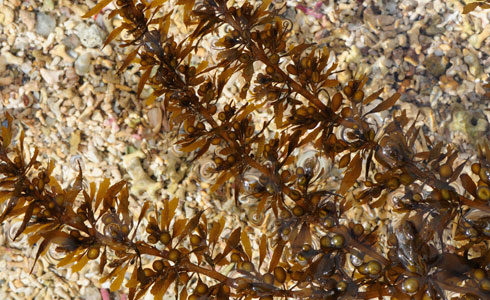
Wireweed, Sargassum muticum
Location: Wireweed is found on the lower and mid shore, in rock pools and on rocks.
Identification: The fronds of wireweed are divided into many branch-like and leaf-like sections. You may also see round structures that look a bit like baubles on a Christmas tree. Wireweed grows up to 4m long and can form large ‘mats’.
Facts: Wireweed is an introduced species, so is not native to the UK. It was first seen on the Isle of Wight in 1973, but since then has spread to most shores in southern England - and it’s heading north. We want to find out exactly how far it has spread, so that we can track where it goes next and study whether this has an effect on our native seaweeds and other marine life.

A close-up of wireweed, Sargassum muticum

Wireweed, Sargassum muticum, in water
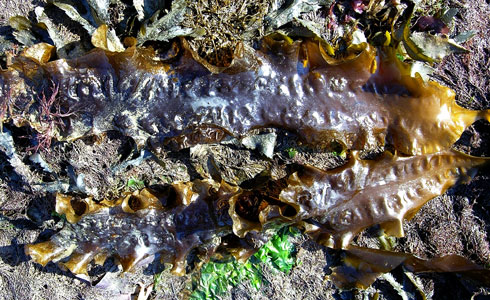
Sugar kelp, Saccharina latissima
Location: Sugar kelp is found on the lower shore and in rock pools
Identification: A large crinkly frond with wavy edges. Sugar kelp looks similar to dabberlocks, but the fronds don’t have a mid-rib. It can grow up to 4m in length.
Facts: According to folklore, the dried fronds can be used to forecast rain, because they take in water and become limp as air humidity increases. Sugar kelp gets its name from the sweet, white powder that is produced from dried fronds – but please don’t try eating it yourself!
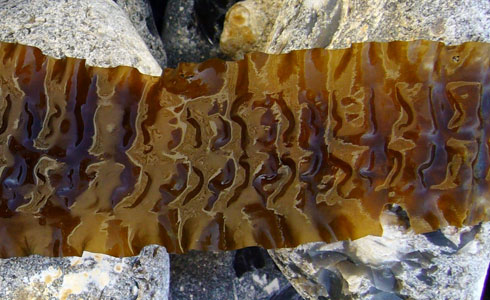
A close-up of sugar kelp, Saccharina latissima

Thongweed, Himanthalia elongata
Location: Thongweed is found on the lower shore, in quite exposed areas.
Identification: Thongweed starts growing as a small button-like structure from which long, narrow, flattened straps develop. The straps can grow up to 1.5m long and do not have air bladders.

Thongweed, Himanthalia elongata, buttons
Fact: The ‘button’ is actually the main body of the seaweed, and the long straps are its reproductive structures, which grow during spring and summer before breaking off to leave short stumps.
Get involved
Help us find out more about these wonderful organisms by taking part in the Big Seaweed Search. You don't need to be an expert - just use our downloadable guides.
Related information
External links
Toolbox
- Contact and enquiries
- Accessibility
- Site map
- Website terms of use
- © The Trustees of the Natural History Museum, London
- Information about cookies
- Mobile
